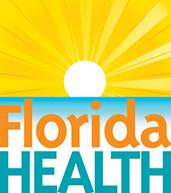It's a New Day in Public Health.
The Florida Department of Health works to protect, promote, and improve the health of all people in Florida through integrated state, county, and community efforts.
Pediatric Disaster Preparedness
Contact the Bureau of Preparedness and Response
- 850-245-4040
-
Mailing Address
Florida Department of Health
4052 Bald Cypress Way, Bin A23
Tallahassee, FL 32399
This page contains resources for community pediatric planning, including child care and school planning. For example: Samples and examples of child care facility emergency planning templates, facility emergency operations plans, and community disaster drills.
Resource Guide: Emergency Preparedness and Response Resources for Child Care Programs - A comprehensive guide developed by the U.S. Department of Health and Human Services, Administration for Children and Families, Office of Child Care.
Disaster Day Care Guide - This web page contains resources and a guide for helping child care providers establish an Emergency Response Plan. Resources were developed as a collaboration of the Florida Departments of Health in Hernando and Pasco counties in coordination with the Early Learning Coalition, the Hernando County Sheriff’s Office, and Hernando and Pasco County emergency management.
Emergency Disaster Plan for Child Care Centers - An example of a simple one page document that a child care center can use to fill in critical information for emergency planning. California Department of Social Services.
Early Learning Coalition of Sarasota County Disaster Preparedness - Handout to assist child care programs develop disaster emergency plans, contains links to websites with disaster planning resources including a sample disaster plan template.
Disaster Plan of the Division of Child Development and Early Education (DCDEE) in North Carolina - This Plan supports the Child Care community with continued assistance or temporary emergency solutions due to disaster related events.
Pediatric Disaster Preparedness Toolkit - This toolkit features resources specific to pediatric disaster preparedness. Disaster preparedness is built on and dependent upon pediatric emergency systems of care that operate effectively day-to-day. Emergency care providers in both the prehospital and emergency department (ED) settings must have appropriate pediatric equipment and supplies, medical oversight, protocols and guidelines, and training in the care of children.
Protecting Children in Child Care During Emergencies - Recommended State and National Regulatory and Accreditation Standards for Family Child Care Homes and Child Care Centers and Supporting Rationale - Developed by the National Association of Child Care Resource & Referral Agencies and Save the Children, Domestic Emergencies Unit, December.
Mass Medical Care with Scarce Resources: A Community Planning Guide - This guide provides planners (e.g., community, facility, state, and Federal) with valuable information that can help them plan for and respond to a mass casualty event. The authors share approaches and strategies to enable the audience to provide the most appropriate standards of care possible under the circumstances of a mass casualty event..
Talking to Kids about Disasters: Parents and teachers should visit Ready.gov for information on helping kids cope after an emergency situation. Another helpful resource is the Ready Kids Activity Book, which teaches children about emergency preparedness through cartoon strips, crossword puzzles, and coloring pages with Pedro the Penguin.
*Note: This page contains materials in the Portable Document Format (PDF). The free Adobe Reader may be required to view these files.



Connect with DOH